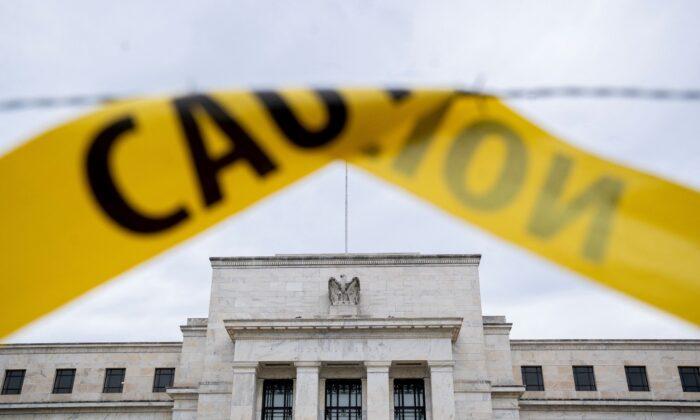The latest U.S. jobs report led investors to raise the yield on the 2-year Treasury note to its highest level in 16 years while dumping their stocks.
There was serious concern that strong U.S. employment levels would encourage the Federal Reserve to continue raising interest rates.
The latest jobs estimate from ADP put pressure on bond markets overseas this week, as the primary gauge of global yields climbed to their highest peak since 2008.
Fed Chairman Jerome Powell has already suggested that the central bank may start raising interest rates this summer, following a pause in June.
Recently released minutes from the last Federal Open Market Committee meeting further revealed that central bank policymakers favor a more hawkish stance towards future rate increases.
Treasury Yields Spike to Highest Levels in Years
Benchmark Treasury yields have surged back through 4 percent soon after the data release.The 2-year Treasury yield, which aligns with interest rate expectations, rose to its highest level since 2007, past the key threshold of 5 percent.
The benchmark 10-year yield, the de-facto global bond benchmark, which moves inversely to price, rose to its highest level in three months, shooting over the 4 percent mark after a recent downtrend.
The rise in bond yields is being led by a growing consensus that the Fed will be forced to raise rates this month after pausing its monetary tightening campaign in June for the first time in over a year.
“How long is a piece of string?” Amy Xie Patrick, head of income strategies at Pendal Group, told Bloomberg when asked how high Treasury yields could go.
“The time to lean long again will come sooner than we think, but I am preferring not to fight momentum here,” she explained.
Investors who were betting on rate cuts have dumped their wagers for the third time in the past 18 months, reported Bloomberg.
“What the last month has shown us is that cash rates need to be closer to 5-6% in most global economies to slow the pace of growth,” Kellie Wood, a money manager at Schroders Plc. told Bloomberg.
“Until services and the labor market weaken we are likely to see yields push higher.”
At the same time, Bloomberg’s index of global government bonds has hit levels last seen in the financial crisis.
Official New Jobs Numbers Lower Than ADP’s Report
Meanwhile, the bond markets highly awaited the Labor Department’s U.S. jobs report published on July 7.The report showed a slowdown in the hiring rate in June with 209,000 new jobs, which was lower than the revised measure of 306,000 jobs in May.
Private sector employment increased by 149,000 last month, with the health care and social assistance sectors seeing the most gains, along with the construction industry.
This was far below ADP’s private sector employment projection of 497,000 new jobs in June.
Some economists already cautioned that ADP’s figures are not a perfect predictor of incoming government data.
“I do not think the market should react too strongly to this number. This number alone doesn’t change my fundamental view,” he said, explaining that ADP “does not necessarily predict what will be in the government’s jobs report.”





